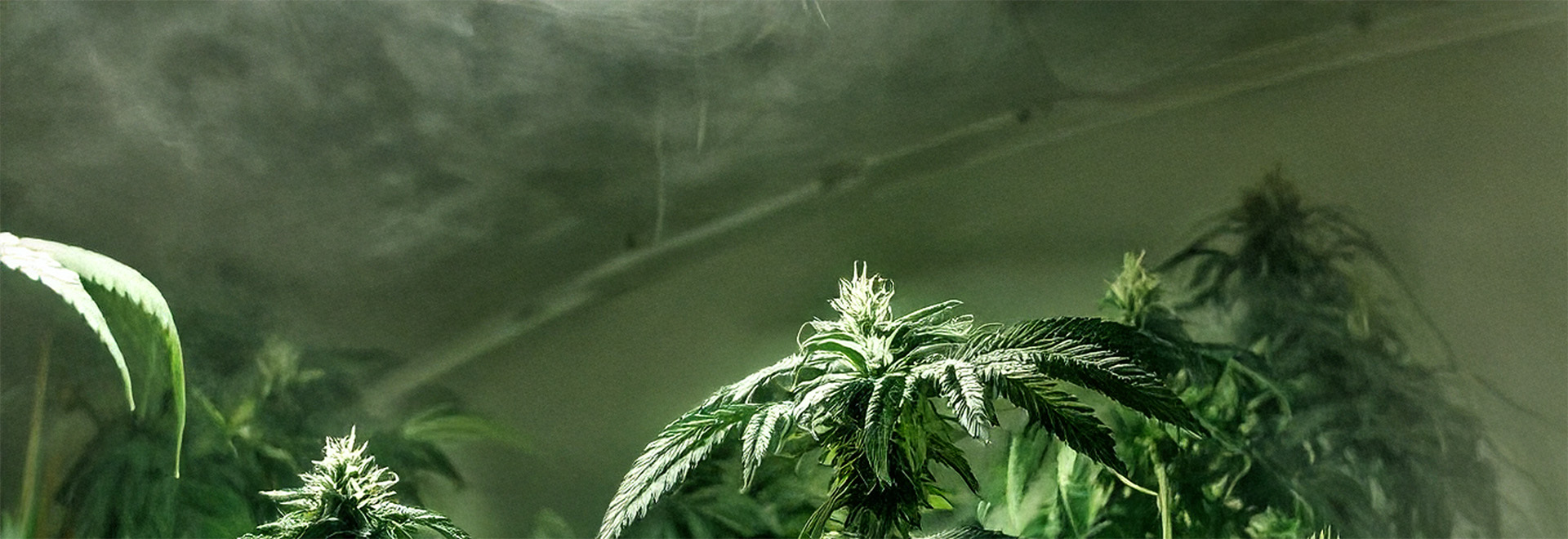CO₂ Cultivation for Cannabis: How to Boost Yield and Growth with Smart CO₂ Supplementation
CO₂ plays an essential role in professional cannabis cultivation. With the right supplementation, yields can increase by up to 30% and growth cycles can be shortened by weeks. In this blog, you’ll learn everything about CO₂ methods, the necessary equipment, and how to optimally utilize the golden triangle: light, CO₂, and nutrition.
Why Apply CO₂ to Cannabis?
Plants need CO₂ for photosynthesis: the process of converting light into energy. In enclosed spaces, the CO₂ in the air is quickly depleted, significantly slowing growth.
By actively adding CO₂:
- You accelerate photosynthesis.
- You increase yield by 20–30%.
- You significantly shorten the cultivation period.
Did you know? Under ideal conditions, an increase to 1200–1500 ppm can more than double the photosynthesis of cannabis plants.
Methods of CO₂ Supplementation
1. CO₂ Generator
A generator burns propane or natural gas to produce CO₂.
Benefits:
- Very powerful; ideal for large spaces.
- Continuous production possible.
Disadvantages:
- Produces heat.
- Increased fire hazard.
- Less suitable for small spaces.
2. CO₂ Cylinder
A cylinder with compressed CO₂ and pressure regulator.
Benefits:
- Clean and controllable source.
- No heat production.
Disadvantages:
- Regular refills needed.
- Less suitable for large projects.
3. CO₂ Bags
Bags containing organic material and fungi that emit CO₂.
Benefits:
- Inexpensive and simple.
- No equipment needed.
Disadvantages:
- Difficult to control.
- Less effective for large areas.
4. CO₂ Bucket (DIY Fermentation)
Mixture of sugar, water, and yeast that emits CO₂.
Benefits:
- Very inexpensive.
- Simple to make.
Disadvantages:
- Low production.
- Poor control and reliability.
Required Equipment
For efficient CO₂ cultivation, the following devices are essential:
- CO₂ Sensors/Meters: Real-time measurement of CO₂ levels (ideal: 1200–1500 ppm).
- CO₂ Controller: Automatically controls your CO₂ source based on measurements.
- Powerful Lighting: Minimum 1000–1200 µmol/m²/s for maximum photosynthesis effect.
- Ventilation Management: Smart control of exhaust to minimize CO₂ loss.
Tip: Choose a sensor with a margin of error of maximum ±50 ppm for accurate control.
The Relationship Between Light and CO₂
CO₂ only works optimally if you also provide sufficient light. Without strong light (>1000 µmol/m²/s), plants cannot utilize the increased CO₂.
- More CO₂ + More Light = Faster growth and higher yield.
- More CO₂ without extra light = Limited effect.
The Golden Triangle: Light, CO₂, and Nutrition
Successful CO₂ cultivation requires optimal alignment of three factors:
| Factor | Optimization |
|---|---|
| Light | 1000–1500 µmol/m²/s PAR light |
| CO₂ | 1200–1500 ppm during light hours |
| Nutrition | 20–30% higher nutritional needs |
Practical Example: CO₂ Application in Home Cultivation
Suppose: you’re growing in a 120×120 cm tent (2.88 m³).
Requirements:
- 5–10 kg CO₂ cylinder + pressure regulator + solenoid valve.
- CO₂ controller and sensor.
- 600–700 watt LED lamp.
- Exhaust system with carbon filter.
- Oscillating fans.
Step-by-Step Plan:
1. Basic Installation
- Install the lamp at the correct height.
- Ensure minimal exhaust during light hours.
2. Install CO₂ System
- Place cylinder outside the tent, lead hose inside.
- Set pressure regulator to 0.2–0.5 bar.
- Hang sensor at plant level (not directly under the lamp).
3. Set Up Controller
- Set CO₂ value to 1200 ppm.
- Ensure CO₂ supply is only active during the light period.
4. Manage Exhaust
- Only activate exhaust when exceeding, for example, 28°C.
- With constant exhaust, account for increased CO₂ consumption (not included in basic consumption calculation).
5. Optimize Light and Nutrition
- Increase nutrient supply by 20–30% for optimal growth.
Correct CO₂ Consumption Calculation
Important: Extraction significantly increases your consumption!
Basic formula without extraction:
m³ x ppm x 2 = mg CO₂ per hour
For 2.88 m³ and 1200 ppm:
2.88 x 1200 x 2 = 6912 mg/h = 6.9 grams CO₂ per hour
Note:
- With ventilation (for example 200 m³/h), your CO₂ injection factor must increase, as the tent is refreshed up to 69 times per hour!
- This means much faster CO₂ loss and more rapidly depleting cylinders.
Solutions for ventilation:
- Work with a ‘sealed room’ (controlled closed space).
- Reduce extraction power during CO₂ injection.
- Inject extra CO₂ after each extraction cycle.
Conclusion
CO₂ supplementation is a proven method to increase cannabis yield by 20–30% and shorten cultivation time.
The key to success? Smart balancing of light, CO₂ and nutrition, and good control over your climate and extraction.
Those who apply CO₂ correctly achieve spectacular results!
📋 Summary Checklist
✅ Strong light (1000–1500 µmol/m²/s)
✅ CO₂ concentration 1200–1500 ppm
✅ Good nutrition (+20–30%)
✅ Minimal extraction during light hours
✅ Sensor at plant level
✅ Set controller for day/night cycle

